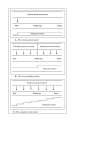Similar support for three different life course socioeconomic models on predicting premature cardiovascular mortality and all-cause mortality
- PMID: 16889658
- PMCID: PMC1569840
- DOI: 10.1186/1471-2458-6-203
Similar support for three different life course socioeconomic models on predicting premature cardiovascular mortality and all-cause mortality
Abstract
Background: There are at least three broad conceptual models for the impact of the social environment on adult disease: the critical period, social mobility, and cumulative life course models. Several studies have shown an association between each of these models and mortality. However, few studies have investigated the importance of the different models within the same setting and none has been performed in samples of the whole population. The purpose of the present study was to study the relation between socioeconomic position (SEP) and mortality using different conceptual models in the whole population of Scania.
Methods: In the present investigation we use socioeconomic information on all men (N = 48,909) and women (N = 47,688) born between 1945 and 1950, alive on January, 1st,1990, and living in the Region of Scania, in Sweden. Focusing on three specific life periods (i.e., ages 10-15, 30-35 and 40-45), we examined the association between SEP and the 12-year risk of premature cardiovascular mortality and all-cause mortality.
Results: There was a strong relation between SEP and mortality among those inside the workforce, irrespective of the conceptual model used. There was a clear upward trend in the mortality hazard rate ratios (HRR) with accumulated exposure to manual SEP in both men (p for trend < 0.001 for both cardiovascular and all-cause mortality) and women (p for trend = 0.01 for cardiovascular mortality) and (p for trend = 0.003 for all-cause mortality). Inter- and intragenerational downward social mobility was associated with an increased mortality risk. When applying similar conceptual models based on workforce participation, it was shown that mortality was affected by the accumulated exposure to being outside the workforce.
Conclusion: There was a strong relation between SEP and cardiovascular and all-cause mortality, irrespective of the conceptual model used. The critical period, social mobility, and cumulative life course models, showed the same fit to the data. That is, one model could not be pointed out as "the best" model and even in this large unselected sample it was not possible to adjudicate which theories best describe the links between life course SEP and mortality risk.
Figures





References
Publication types
MeSH terms
LinkOut - more resources
Full Text Sources

